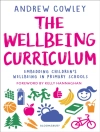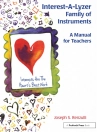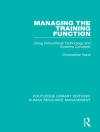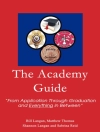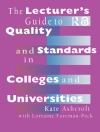This Handbook brings together the viewpoints of academics, practitioners, artists and people seeking refuge in Scotland to explore the global learnings that can be gained from this context. The book engages with the challenge of delivering integration as multi-directional processes within a broader setting in which forced migration is often criminalised. Situating its analysis of integration in Scotland, the book combines chapters based in theory, which explore issues ranging from the concept of integration to law, borders and integration policy, with creative and practical responses to these issues. The book offers hopeful alternatives to current realities of forced migration, and a compelling challenge to dominant narratives related to refuge and integration. It will be of interest to practitioners, policymakers and scholars working with refugees and asylum seekers around the world.
This book will be open access under a CC BY ND licence.
İçerik tablosu
Sabir Zazai: Foreword
Esa Aldegheri, Dan Fisher and Alison Phipps: Introduction: Integration with Refugees
Section 1: Rethinking Integration
Chapter 1.1. Hyab Yohannes and Alison Phipps: Restorative Integration as a Decolonial Praxis: On Love and Rage
Chapter 1.2. Esa Aldegheri, Dan Fisher and Alison Phipps: Re-Framing Integration as Restorative: Implications For Approach, Process and Practice
Chapter 1.3. Teresa Piacentini: A Manifesto for Change: On the Ethics and Practice of Teaching and Researching Migration in the Political Now!
Interventions
1a. Tawona Sitholé: Touching Care
1b. Chirikure Chirikure: Thirst and Stretch Out Your Strongest Hand
1c. Nii Tete Yartey: Restorative Integration as Choreography
Section 2: Communities, Integration and Inter-Cultural Communication
Chapter 2.1. Esa Aldegheri and Pinar Aksu: Community Development, Resistance and Integration: Reflections on Practice and Theory
Chapter 2.2. Sarah Cox: Languages of Integration – Steps Towards Ecological, Multilingual Practices
Interventions
2a. Sawsan Abdelghany: Creative Approaches to Teaching ESOL
2b. Mohammad Al Khatib: Language and Integration
2c. Piki Diamond: Let us Manaaki!
Section 3: Place(s) For Integration
Chapter 3.1. Azadeh Fatehrad and Davide Natalini: Nature-Based Integration: Unpacking Community Experiences Across the UK
Chapter 3.2. Pinar Aksu and Dan Fisher: The Politics of Asylum Dispersal: Testimonies of Dis-Integration in Hotel Accommodation
Interventions
3a. J. E. Nurse: Mental Health in the Asylum Process and Integration
3b. Will Tuladhar-Douglas: Integration and Ecological Justice
3c. Brittnee Lysen: The Renaming of New Zealand to Aotearoa: Embodying a Place of Refuge
Section 4: Law and The Borders of Integration
Chapter 4.1. Dan Fisher and Pinar Aksu: Integration in Immigration Law: Discretion, Exclusion and a Double-Edged Sword
Chapter 4.2. Esa Aldegheri: A Point of Departure: Mapping and Integration
Interventions
4a. S.O.: Waiting Time and Integration
4b. Adam Williamson: Interpreting in the Asylum System – The Elephant in the Room
4c. Kofi Anyidoho: Goodfriday
Section 5: Narratives of Integration
Chapter 5.1. Bethia Pearson, Sadie Durkacz Ryan and Marzanna Antoniak: Integration and the Media: Reflections from a Participatory Project in Glasgow
Chapter 5.2. Esa Aldegheri: Education for Integration: The Importance of Narrative-Based Approaches
Interventions
5a. Katherine Mckinnon: The Ambiguity of Poetry can be Liberating
5b. Tawona Sitholé and Alison Phipps: Little Amal at COP26
5c. Hsiao-Chiang Wang – Hope: Heritage Education as a Method for Integration: Storytelling in The Antonine Wall
Section 6: Improving Integration Policy
Chapter 6.1. Scot Hunter, Dan Fisher and Savan Qadir: Understanding Refugee Integration in Policymaking: Lessons from Policy Comparisons
Chapter 6.2. Scot Hunter and Maggie Grant: Safety, Recovery and Belonging: Interacting Policies and Integrative Practices Encountered by Unaccompanied Children in Scotland
Interventions
6a. Savan Qadir: From Uncertainty to Advocacy: Navigating the Complexity of Integration
6b. Ishmail Yambasu: Education and Integration
6c. Anonymous Palestinian Voice: Palestinian Voice (Arab ‘48)
Section 7: Arts-Based Integration as Restorative Practice
Chapter 7.1: Catrin Evans: The Integrating Self: (Re)Construction and Self-Authorship as a Form of Creative Citizenship-Forming
Chapter 7.2: Alison Phipps: How Might We Approach a Powerful Stranger? Arts-Based Methods and Cultural Approaches to Refugee Integration
Interventions
7a. Lucy Cathcart-Fröden: I have more than just one Name: Learning from Multilingual Creative Workshops
7b. Rola Zakaria Sabab: A Personal Odyssey through the Destruction: Chronicles of Life in War-Torn Gaza
7c. Francis Nyamjoh: The Pandemic’s Whimsical Lesson: A Scholarly Conversation with Creative AI
Avril Bellinger: Afterword
8a. Nazmi Al Masri: Salam and Peace from Gaza to All Babies
Glossary
Yazar hakkında
Dan Fisher is a political geographer and a research associate at the Centre for Public Policy, University of Glasgow, UK. His areas of interest are the practices of border control, processes of asylum determination and the governance of refugee integration. Dan has engaged widely with the policy community, including through his work with UNESCO-RILA which contributed to the development of the third New Scots Refugee Integration Strategy in 2024.


